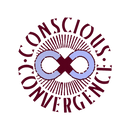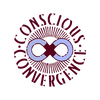
MAYAN
The Mayan civilization is based in Guatemala, on the sides of Mexico and Belize.
This amazing tribe weaves the most unique fabric with a backstrap loom, called a Huipiles, and with a foot loom called a Cortes. They also weave beautiful belts with a belt loom in a smaller version.
These women manage different crafts in each village, including beading work, embroidery, and basket weaving.
Each piece is woven to be worn, and during this time they will weave another in about 1 month, after which they can sell the worn, or new, one to support their family and children.
This tradition carries through mothers and daughters like a thread in the loom, regenerating generation after generation.
Mayans also practice natural dye colorant and spin fibers like organic cotton Ixcaco or wool. 7
They usually weave patterns, glyphs, geometric shapes, plants and flowers, and in each town, or department, colors and shapes are different.
Weaving fine clothing was the purview of noble women, and beautiful woven fabric was both an artistic expression and a source of wealth, often given as tribute to rulers.
Noble girls were taught to use the backstrap loom and to spin thread with whorls for making gauzy cotton and brocaded fabrics.

GUNA
The Guna, also known as Kuna or Cuna, are an indigenous people of Panama and Colombia.
They live in Kuna Yala, and 100 years ago became independent of the Panama territory through a revolution. They occupy the island and have their own government outside the system.
In Kuna Yala, each community has its own political organization, led by a Saila (pronounced "sigh-lah").
The Saila is traditionally both the political and spiritual leader of the community, and he memorizes songs which relate the sacred history of the people, in turn, transmitting them to the people.
Decisions are made in meetings held in the Onmaked Nega, or Ibeorgun Nega (Congress House or Casa de Congreso), a structure which likewise serves both political and spiritual purposes.
Guna live from their art "Molas,” agriculture and fishing.
The geometrical Mola drawings are used as protection and were at first tattoos on the body, then later projected on fabric.
Usually they sew with the techniques of appliqué and reverse appliqué, drawings like labyrinths, where bad spirits get lost and cannot penetrate their bodies.

WOUNAAN
The name Embera means "people". The Embera–Wounaan are a semi-nomadic indigenous people in Panama.
The women wear brightly colored cloth wrapped at the waist as a skirt. Except when in towns, the women do not cover their torsos, and wear long, straight black hair. The children go naked until puberty, and no one wears shoes. They paint their bodies with a dye made from Genipa Americana. This black dye is thought to repel insects, and the designs are known as Jaguar Tattoos. On special occasions, using this same dye, they print intricate geometric patterns all over their bodies using blocks carved from balsa wood. The women also wear silver necklaces and silver earrings on these special occasions, many of the necklaces being made of old silver coins. A hole is punched in the coin so a silver chain can run through it, many of the coins dating to the 19th century, and have been passed down from mother to daughter. The Embera people use matrilineal descent, practice polygamy, and live in family units.
The Embera have their own form of government and live by their own set of unwritten rules. They avoid relying on the Panamanian Police or any other branch of the Panamanian or Colombian governments. Health care is primarily provided by trained shamans. The land is community owned and community farmed, and
everyone in the village pitches in to work at harvest time. If one hunter gets a larger animal, everybody in the village shares the meat.
THE FOUNDER & DESIGNER

ARTIST
SILVIA ZAMPROGNA aka SELVA
Founder & Creative Director of Conscious Convergence.
Silvia is an Italian visionary Artist, known under the alias Selva Bhairavi, who works in Environmental Art and Ethical Fashion. She studied at the European Institution of Design (IED) and holds a BA in “ Textile Design & Fashion”. At a young age, she began designing patterns and clothing, channeling through symbols and ancient cultures, eventually working in Milan as a freelance consultant for prestigious brands.
In 2014 Sylvia joined the Cosmic Convergence production core team as Art Director, incorporating sustainable management practices into the production of the Festival. She created the Cosmic Social Outreach program, a project dedicated to leaving a positive impact in the communities, transforming temporary festival structures into permanent community buildings.
THE TEAM

ELENA CHIQUIVAL
Elena is a community leader in Santiago Atitlan, administering the CONSORCIO, a 5000 women cooperative focused on improving the right of indigenous women in Guatemala.
Elena has a background in organizing international indigenous peoples conferences, and has helped CONSORCIO acquire grant funding from the European Union and Japanese Embassy.

DANIELA PINTO
Daniela is our photographer & website curator .
She started loving design when she moved to Italy for her studies.
She later migrated back home in Guatemala where she fell in love again with her culture and colors, she now spends her time designing for conscious projects.

